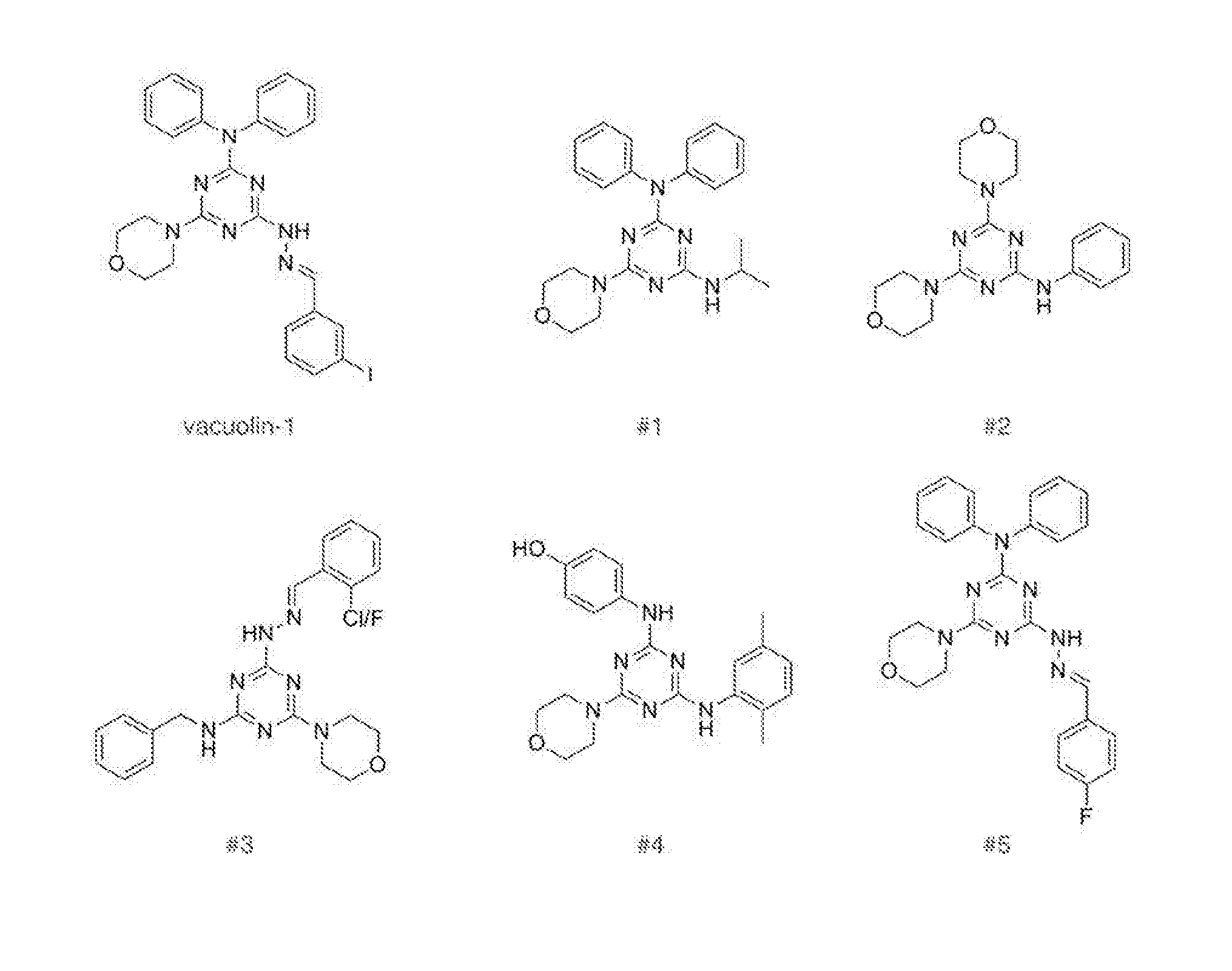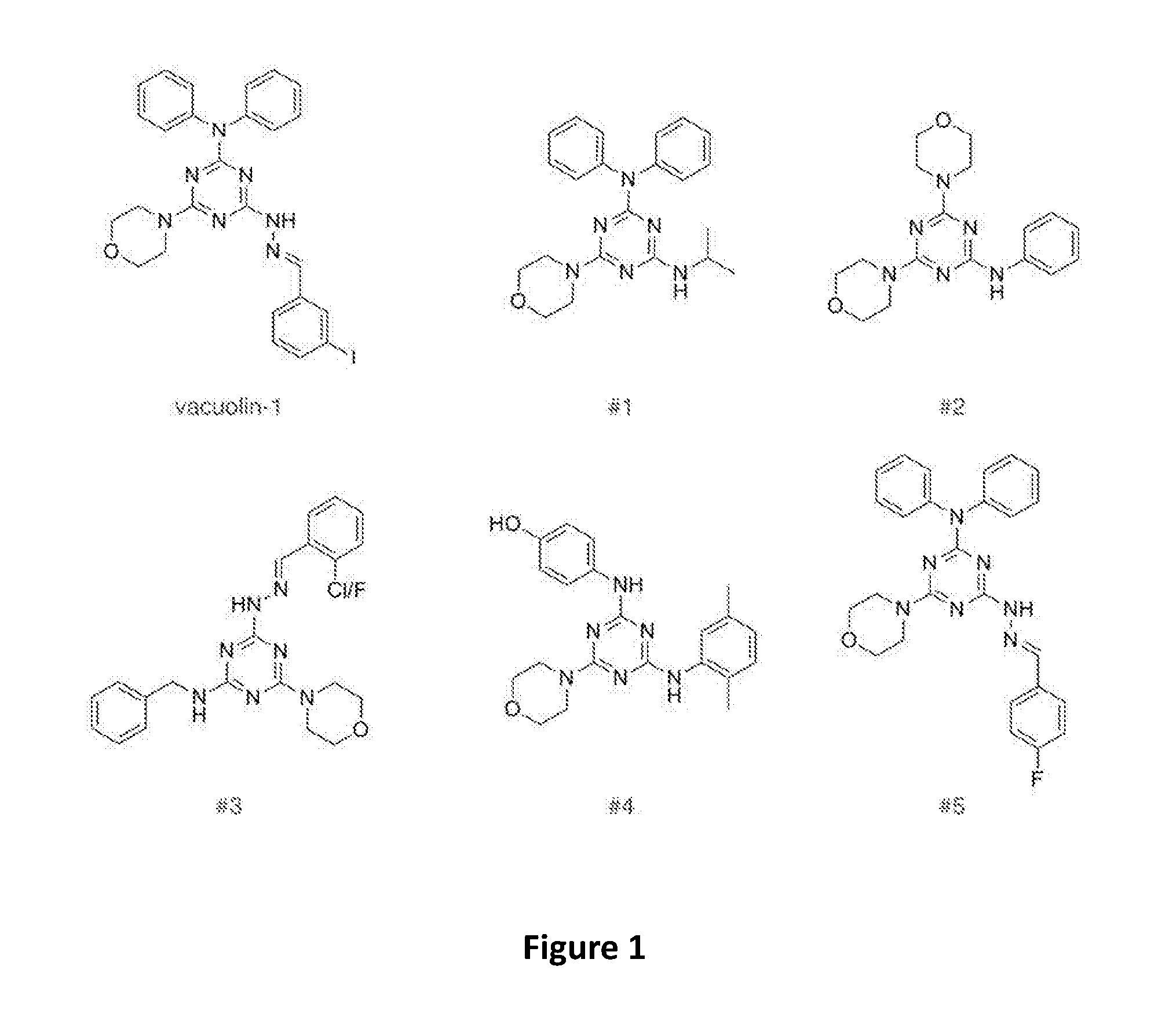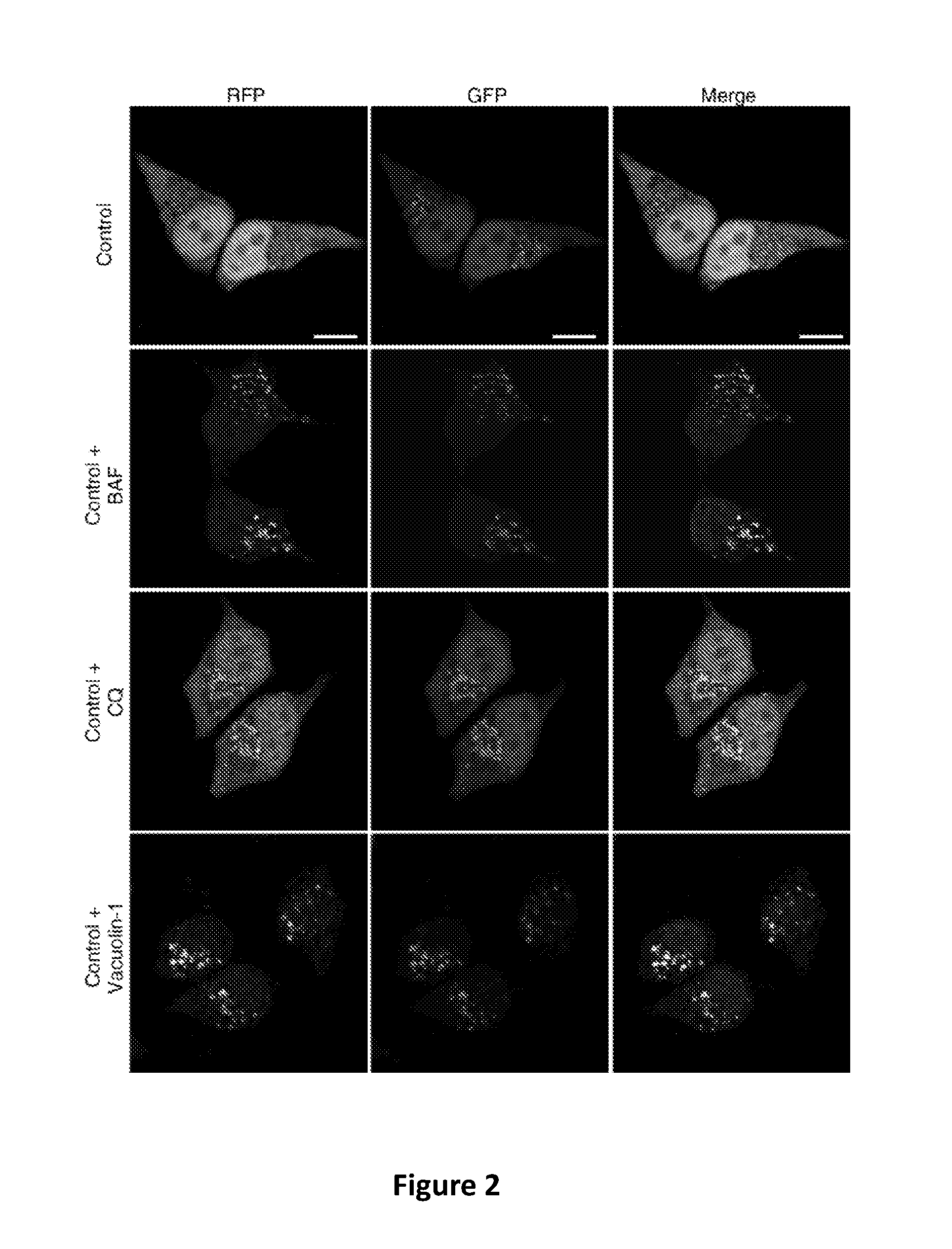Use of novel autophagy inhibitors to treat autophagy related human diseases
a technology of autophagy and autophagy, applied in the field of autophagy related human diseases, can solve the problems of endosomal trafficking and autophagy inhibition, and achieve the effect of inhibiting autophagy and endosomal trafficking
- Summary
- Abstract
- Description
- Claims
- Application Information
AI Technical Summary
Benefits of technology
Problems solved by technology
Method used
Image
Examples
example 1
The Small Chemical Vacuolin-1 Functions as an Autophagy Inhibitor by Inhibiting the Autophagosomal-Lysosomal Fusion in HeLa Cells
[0065]Prompted by the fact that many available autophagy chemical modulators lack either potency or specificity (Kimura et al., 2013), a fluorescence image-based assay was set up to screen small molecules affecting autophagy. HeLa cells, an autophagy competent cell line, were infected with lentiviruses carrying expression cassettes that encode RFP-GFP-LC3 (tfLC3) (Kimura et al., 2007). Thus, the LC3-II positive autophagosomes are labeled with both GFP and RFP signals shown as yellow puncta, and after fusion with lysosomes, autolysosomes are shown as red only puncta because GFP loses its fluorescence in acidic pH. As shown in FIG. 2, starvation greatly induced the increase of both yellow and red only puncta, yet treatment of cells with bafilomycin (BAF), an inhibitor of the vacuolar proton pump that blocks the fusion of autophagosomes with lysosomes (Yamamo...
example 2
Vacuolin-1 Potently and Reversibly Inhibits Autophagy but Shows Little Cell Toxicity
[0067]Vacuolin-1 is a cell-permeable and water soluble triazine based compound. It has been previously reported that vacuolin-1 induced rapid homotypic fusion of endosomes and lysosomes to form large and swollen structures, yet it did not disturb cell cytoskeletal network (Cerny et al., 2004; Huynh and Andrews, 2005; Shaik et al., 2009). Amazingly, vacuolin-1 was at least ten times more potent than CQ in suppressing autophagy (FIGS. 4A and 5), yet it exhibited much less cell toxicity than CQ in a wide variety of cell types (FIGS. 4B and 6). Interestingly, the fusion block between autophagosomes and lysosomes was completely relieved 3 hours after removal of vacuolin-1 from the medium (FIG. 4C). Similarly, vacuolin-1 induced homotypic fusion between endosomes or lysosomes was recovered after removal of vacuolin-1 (data not shown). These data indicate that the effects of vacuolin-1 on autophagy inhibiti...
example 3
Vacuolin-1 Alkalinized Lysosomal pH and Decreased Lysosomal Ca2+ Content
[0068]The mechanisms underlying vacuolin-1 induced autophagy arrest were explored. As lysosomal pH is essential for the fusion (Lu et al., 2013) and lysosomes were enlarged by vacuolin-1 treatment (Cerny et al., 2004; Huynh and Andrews, 2005; Shaik et al., 2009), it was examined whether vacuolin-1 affects lysosomal pH in these enlarged lysosomes. LysoSensor Green DND-189 (pKa=˜5.2) was first applied to qualitatively measure lysosomal pH (Davis-Kaplan et al., 2004). LysoSensor Green DND-189 permeates cell membranes and accumulates in acidic intracellular organelles, and its fluorescence increases or decreases in acidic or alkaline environments, respectively. As shown in FIG. 4D, vacuolin-1 treatment raised lysosomal pH in HeLa cells. Lysosomal pH was further quantified by a quantitative ratiometricLysoSensor Yellow / Blue DND-160 (DePedro and Urayama, 2009) stained cells and found that lysosomal pH in vacuolin-1 tr...
PUM
| Property | Measurement | Unit |
|---|---|---|
| volume | aaaaa | aaaaa |
| pH | aaaaa | aaaaa |
| volumes | aaaaa | aaaaa |
Abstract
Description
Claims
Application Information
 Login to View More
Login to View More - R&D
- Intellectual Property
- Life Sciences
- Materials
- Tech Scout
- Unparalleled Data Quality
- Higher Quality Content
- 60% Fewer Hallucinations
Browse by: Latest US Patents, China's latest patents, Technical Efficacy Thesaurus, Application Domain, Technology Topic, Popular Technical Reports.
© 2025 PatSnap. All rights reserved.Legal|Privacy policy|Modern Slavery Act Transparency Statement|Sitemap|About US| Contact US: help@patsnap.com



